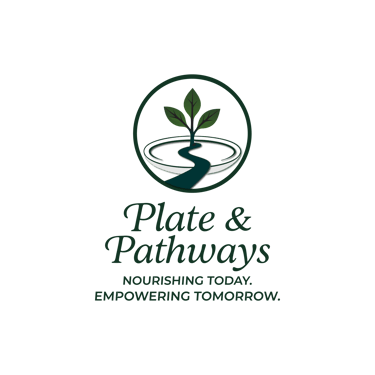Plate and Pathways Fights Food Scarcity
Plate and Pathways Fights Food Scarcity
Brianna Guntz
10/27/20253 min read

Three years ago, 54-year-old Chicagoan Broadway Horner found himself homeless.
While navigating the daily struggle of where to find shelter, he met Alicia Spradley — the founder of Plate and Pathways — while she was passing out hot meals. Spradley was hosting one of her monthly pop ups where she provides home cooked meals to Rogers Park and Edgewater’s unhoused population.
For him, the kindness and respect he experienced from Spradley was inspiring. He said after using the program 10 times from 2022-25, the impact Plate and Pathways had on him was profound. In 2023, after obtaining housing, he began volunteering with Plate and Pathways.
Plate and Pathways serves an average of around 50 people with its monthly hot meals and its nutritional education program assists an average of eight to 10 people. The organization is seeking funding for a community center to expand their reach, according to Spradley. Currently, the majority of Plate and Pathways’ funding comes from Spradley personally, who started the nonprofit in 2022.
“I wanted to do something different,” Spradley said. “The organizations I volunteered with — it was just giving out food and not necessarily showing people how to stretch their resources and repurpose their food.”
The result was a multi-pronged approach focusing on meal and food distribution programs. In addition to distributing hot, ready-to-eat meals to the community, Plate and Pathways’ meal program focuses on education with methods for reusing food, cooking demonstrations and hands-on workshops.
In an event Sept. 24, the program taught families how to make a healthier version of their children’s favorite takeout — Chick-fil-a. Spradley walked families through the process of making a grilled chicken salad and how to store leftovers properly. She said the children raved about the taste, and the parents committed to more home-cooked meals.
While these lessons support long term habit changes and power nutrition education, Spradley said she expects people who are unhoused to care more about the meal distribution program. The ability to provide a hot meal was critical for Spradley since hot meals can be hard to come by for the unhoused populations.
“Usually they’re really appreciative of having a warm meal,” Spradley said. “There are some people that drop food off to them as well, but by the time they get it, it’s cold.”
Plate and Pathways is able to ensure a hot meal by making all of the food on the day of distribution. Spradley said she and her husband prepare the food in a few hours at their home before the planned drop offs. The food is then wrapped in foil, placed in insulated coolers and kept hot with warmers onsite.
The simple impact of warm food instead of cold cans isn’t lost on the receiving end of the program. Horner said there were times when the meals from Plate and Pathways provided a sense of home, momentarily easing his burdens.
“To get a hot meal on a day, let’s say, after I’ve been in the sun and trying to find some place to lay my head, it makes it a whole lot easier when your stomach is full,” Horner said.
The meals helped bridge the gap between having nothing to eat and traveling 10 to 20 miles on a daily basis, Horner said.
Now housed, Horner said volunteering with Plate and Pathways has become one of the things he’s most proud of.
Erica Langeston, a recipient of Plate and Pathways’ services who is currently unhoused, said the organization taught her to try to help others whenever possible. Despite her situation she said she goes out of her way to help fellow unhoused and hungry people get something to eat when she can.
Plate and Pathways does more than provide meals — they offer a sense of normalcy to unhoused individuals, according to Langeston.
Langeston said Spradley has a way of humanizing the unhoused experience.
“They are a godsend,” Langeston said as emotion thickened her voice. “A lot of people really look upon you and make you feel bad for being homeless. Some people, not Alicia.”
As of 2022, The Chicago Coalition to End Homelessness estimated there to be 76,375 people experiencing homelessness in the city. Despite the sheer quantity of unhoused people, Langeston said Plate and Pathways never made her feel like another statistic.
For Langeston, there’s an acute need for programs like Plate and Pathways — especially in Rogers Park.
“Rogers Park and also Uptown, they have a lot of homeless people,” Langeston said. “More than any area that I’ve seen, and it’s just not enough.”
The exact number of unhoused people in Chicago is difficult to report because of “doubling-up,” when an individual lives temporarily with a friend or family member but lacks permanent housing, according to The Chicago Coalition to End Homelessness.
Currently, Chicago neighborhood specific data sets are unavailable.
Other food providers pale in comparison to Path and Pathways, Langeston said. Food pantries present the issue of can storage and she said her experience with other food assistance programs was poor.
“It’s my only wish that there were more places like this,” Langeston said.
